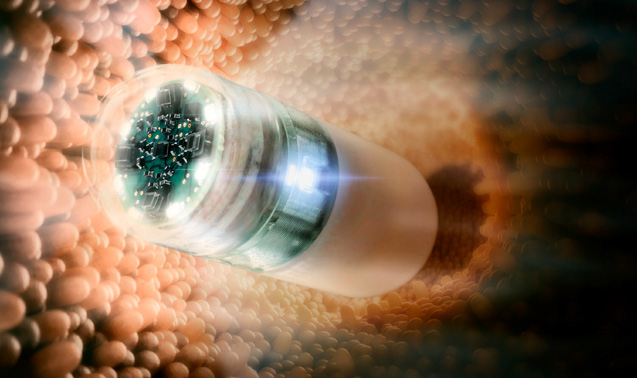Faster small-intestine diagnostics thanks to a camera pill

A larger image section, sharper images, and more efficient image evaluation – this is the promise of an endoscopy capsule developed by Fraunhofer IZM for detailed examination of the small intestine.
In 2001, the human small intestine was examined for the first time with a capsule endoscopy: a patient swallowed a pill containing a tiny microcamera. Once inside the body, the camera took thousands of photos of the small intestine, which, with its winding six meters in length, had previously been inaccessible for an examination. Today, thanks to various capsule technologies, a method for imaging analysis of the small intestine has been established.
All capsule endoscopies have the same downside, however: the images are timetriggered, regardless of whether the capsule endoscope has moved or not. This produces redundant data that needs to be filtered out manually. Having the photography triggered by motion can reduce the amount of redundant data to a minimum by up to one-third.
Endotrace, a research project funded by the German Federal Ministry of Education and Research (BMBF) to the tune of €1.2 million, has produced a capsule technology that no longer takes redundant photos. The project partners have developed a simple-looking capsule the size of a hard candy, or sweet, but equipped with high-tech features: in addition to a total of five cameras, a tracer, and a computer memory the small pill also contains integrated batteries and LED lights. From a technical point of view, the pill is already ready for market, but it still requires approval.
But how does the camera know when to take a photo? The change in the intestinal villi sends a signal to the computer memory and the capsule takes a photo after a movement of 2-3 mm. Instead of several thousand images, the Endotrace capsule generates less than half the data for evaluation and ultimately leads to a faster medical diagnosis.
Last modified: